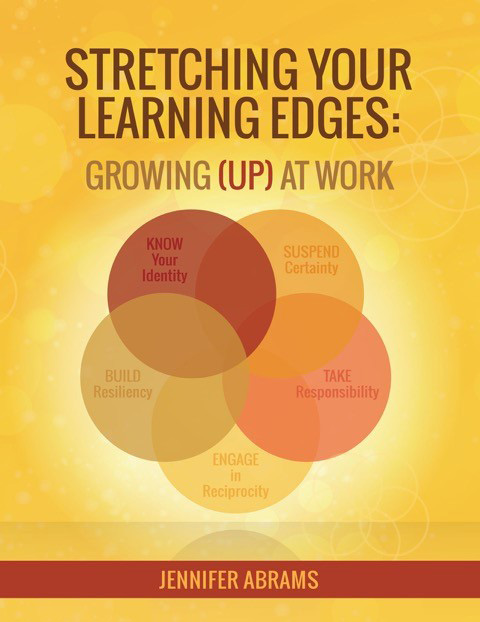Getting Unstuck: Using an Outcome Map for Effective Problem Solving
October 1, 2003
This post was originally written by Jennifer and published in the Utah Special Educator.
You know when something is wrong. You feel it. Your student isn’t achieving in math and you have tried everything. A colleague in the department isn’t communicating well and others are getting irritated.
When you are frustrated or concerned, you know.
What you might NOT know is what to do about it.
Knowing that there will be challenges at work is one thing. Having a problem-solving tool to help you plan out what to do about them is another.
In their book, The Adaptive School: A Sourcebook for Developing Collaborative Groups (Christopher-Gordon, 1999), Bob Garmston and Bruce Wellman share a problem-solving tool entitled an Outcome Map. Working step by step through the six stages of the Outcome Map can help you think through your challenges. You come away with a concern that might not have been made smaller, but it might feel a bit easier to manage.
By walking through one teacher’s challenge question by question we will be able to get a fuller picture of how the Outcome Map works.
What is the presenting problem?
Can you clearly frame the issue? Could you do it in a 25 word telegram? Stating the problem compactly is the first step. Your problem might be a “presenting” problem, meaning something else might surface that is more of a root cause than what appears on the surface. For now, go with the most exact description you have of the challenge.
Betsy is a 2 nd year middle school P.E. teacher. She defined her problem as management. Her 3 rd period students, specifically students A, B, C, D, were not respectful or attentive.
What is the tentative outcome?
Once the problem has been defined, move on to your desired outcome. For some, it’s “exciting” to sit in the drama of a problem, but it isn’t nearly as helpful as moving toward what it would look like if it were resolved. Clearly define the best place you would be in if the problem were solved.
For Betsy the best outcome was “The full attention and respect of students A, B, C, D.” With these students back “on board”, Betsy felt all the students in the class would achieve at a higher level and she’d feel more like a “presence” in the classroom.
What are the desired behaviors you’d like to see exhibited in this person(s)?
Paying attention to details pays off. Sitting with a broad goal to have “better communication” with a colleague or “greater respect” from a student doesn’t help us envision the future in enough detail. What does better communication or more respect look like or sound like? What actions could a student take that would show you his attentiveness? What behaviors would a colleague demonstrate to show you she was more interested in communicating well? Getting clear about what the desired behaviors would be takes time, but it’s worth the effort.
At this stage, Betsy got concrete and described six behavioral expectations she had for her students, including “doing all the warm up activities with the class” and “having eye contact with her during instruction.” Pinning down the visuals for her made the process more real.
What internal resources does this person(s) need?
If the person were to demonstrate these desired behaviors, what additional knowledge, skills or capacities would he need? When colleagues or students don’t do the desired behaviors successfully, chances are something is unknown or they are unable to do the behavior due to a lack of skill or a lack of emotional awareness. What you think is needed on the “inside” for someone to move forward? Self-awareness? A set of instructions? Visuals?
Betsy realized at this point that using the word “respect” over and over again didn’t help her students see what respect looked and sounded like. She decided they needed more knowledge. How should they sit? What wasn’t acceptable? What did quiet look like?
What strategies can you use to promote this person’s growth?
Now that you have done some detailed thinking about the outcome and behaviors you are looking to ultimately see, move to strategies. Designing strategies that are congruent and aligned with the specific behaviors will more than likely get better results than if you had “gone to solution” earlier on in the process.
At this point, Betsy decided on five specific strategies to start. They included restating the rules again with all students, talking to each aforementioned student individually, and clearly modeling the behaviors she wanted.
What internal resources do you need in order to be successful in carrying out these strategies?
In this stage, your own self-awareness is needed. Now that you scripted out these strategies, what might stop you from putting them into action? Do you need more knowledge? The right words? At this stage teachers might admit they need more courage. They need to be more flexible. They need help scripting their talk. Whatever is decided, find support to help you locate your needed resources.
Betsy realized at this stage that she needed to feel like a teacher.
In her second year of teaching, she was still growing into the identity of authority. She needed to believe that she was not a “bad guy,” but instead doing her job as the teacher.
I have seen first year teachers, department chairs, peer coaching partners, and coaches work through maps with colleagues. Problems seem less overwhelming and easier to manage once one begins to answer the questions the map provides.
Challenges are inevitable. Using an Outcome Map can help the drama in a situation decrease and a sense of resourcefulness increase. What a great outcome.

